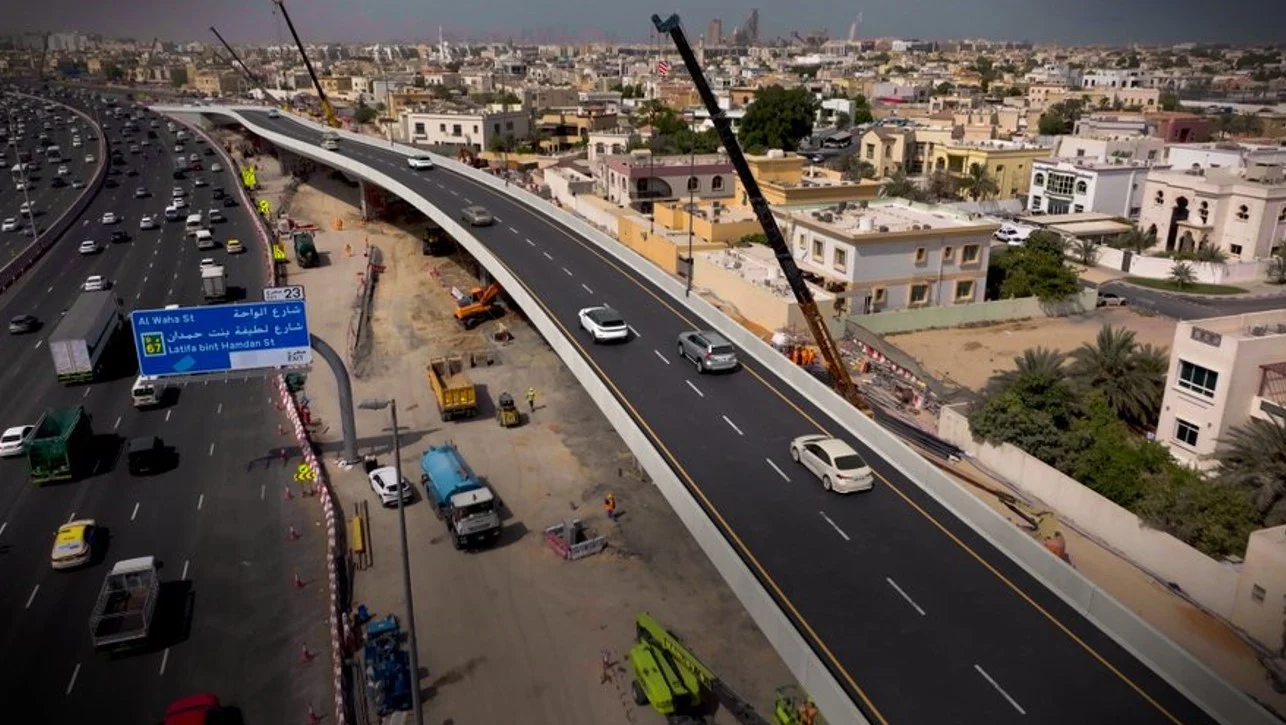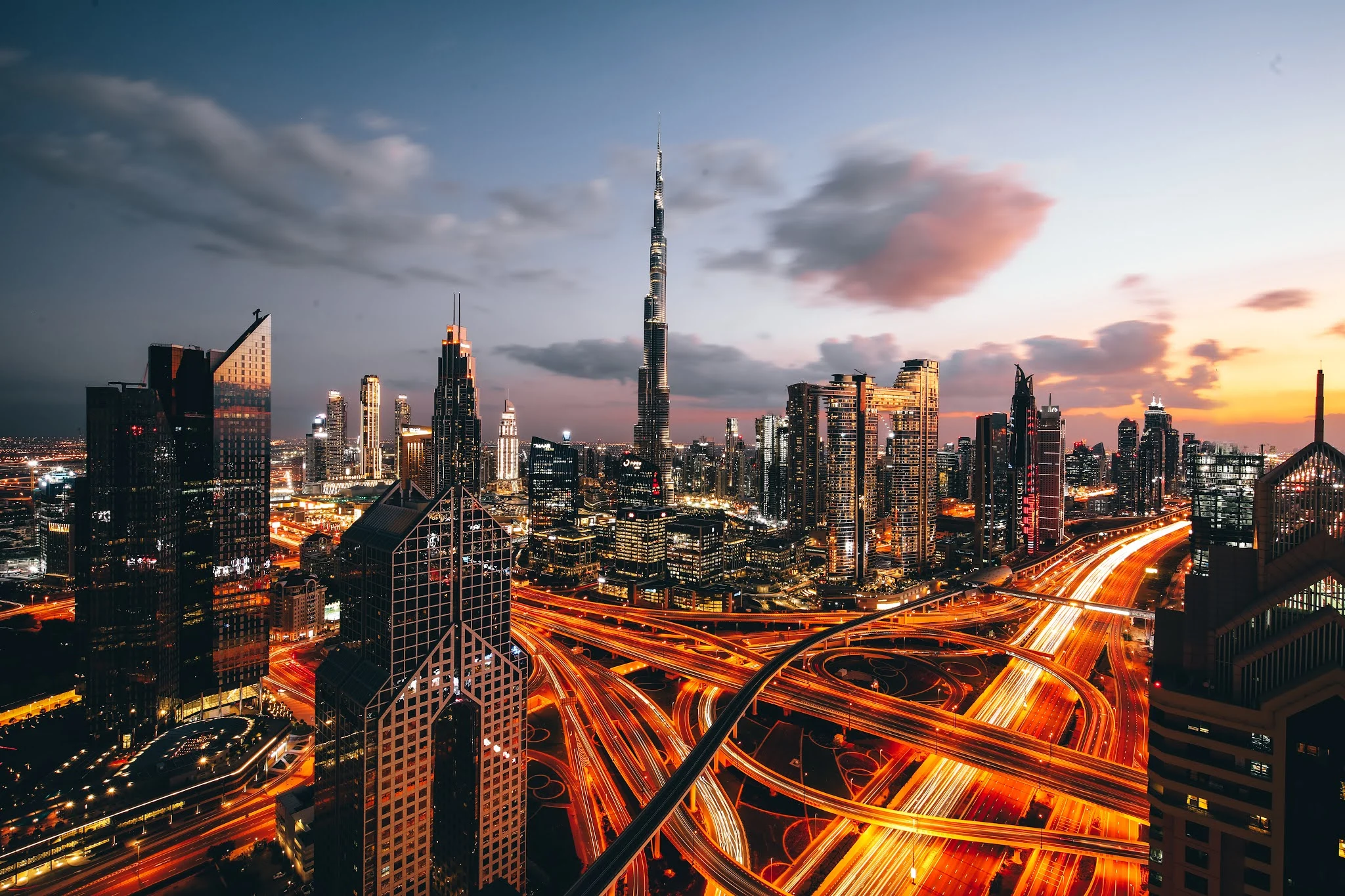Dubai, recognized worldwide for its innovation and impressive urban development, continues to implement significant improvements in its road infrastructure to stay at the forefront of best practices in transportation. With the aim of meeting the needs of a growing population and millions of annual visitors, the city is investing in projects that optimize traffic flow and elevate safety standards on its roads.
In this context, the Dubai Roads and Transport Authority (RTA) has recently announced changes to the speed limits of two major roadways: Al Amardi Street and Sheikh Zayed bin Hamdan Al Nahyan Street. These adjustments, which are part of a comprehensive mobility strategy, aim not only to improve transport efficiency but also to reflect the improvements and expansions made to the infrastructure of these roads.
The increase in the speed limit improves traffic flow.

The Dubai Roads and Transport Authority (RTA) has decided to increase the speed limit in strategic areas of the city, a measure aimed at improving traffic flow and reducing travel times. This adjustment, which came into effect on September 30, reflects the authorities’ commitment to adapting to the needs of a constantly growing metropolis and providing a more efficient driving experience for its residents and visitors.
The decision to raise the maximum allowed speed is based on extensive studies of traffic flow and road conditions. It has been determined that, in certain areas where the infrastructure allows, it is feasible and safe to increase the limit without compromising the safety of drivers and pedestrians. This measure also aligns with international practices in traffic management, where it has been shown that appropriate speed limits can reduce congestion and improve road utilization.
Moreover, this change not only optimizes travel time but can also contribute to a reduction in fuel consumption and pollutant emissions, by making trips more efficient. A more constant and fluid traffic pace decreases the need for frequent braking and acceleration, resulting in environmental and economic benefits for the city and its inhabitants.
It is important to highlight that this adjustment has been made in coordination with the Dubai Police, ensuring that the highest standards of road safety are maintained. Traffic signs and road markings have been replaced to reflect the new limits, and awareness campaigns will be carried out to inform drivers about the implemented changes. Authorities emphasize that adhering to speed limits is essential to ensuring the safety of all road users.
Changes in Sheikh Zayed bin Hamdan and Al Amardi

One of the main changes has occurred on Sheikh Zayed bin Hamdan Al Nahyan Street, where the speed limit has been raised to 100 km/h on the section between Dubai Al Ain Road and the Academic City roundabout. This major roadway, which is crucial for intercity traffic, has undergone a series of improvements and expansions that justify this increase. Authorities have invested significantly in this road to accommodate the growing volume of traffic and to enhance connectivity between various areas of the city.
Sheikh Zayed bin Hamdan Al Nahyan Street has been the subject of several expansion and development projects, including the construction of an overpass at Dubai Al Ain Road. These improvements have increased the number of lanes and optimized the intersections, allowing for a more efficient and safer flow of vehicles. With a more robust and modern infrastructure, it is possible to accommodate a higher volume of traffic at higher speeds without compromising safety. This stretch of road is vital for connecting emerging residential areas with the business and leisure centers of Dubai.
In addition, Al Amardi Street has also seen an increase in the speed limit. Expansion work has been carried out, including the construction of service roads and the transformation of the roundabout with Al Khawaneej Street into a signal-controlled intersection. These modifications facilitate transit and improve connectivity between different areas of the city, benefiting both residents and visitors. The changes in infrastructure have been designed to support higher speeds safely, with improvements in signage and road surfaces.
These expansions reflect Dubai’s commitment to sustainable development and innovation in transportation. By improving the efficiency of its main roads, the city aims to reduce congestion, decrease travel times, and enhance the quality of life for its residents. Moreover, these projects take into account the future growth of the city, ensuring that the infrastructure is prepared for upcoming demands.
Proyectos futuros y compromiso con la seguridad vial
Looking ahead, the RTA plans to continue a series of projects that will further strengthen Dubai’s road infrastructure. All the elevated crossings on Sheikh Zayed bin Hamdan Al Nahyan Street are expected to be completed by 2030. The completion of this work will allow for a uniform maximum speed limit of 100 km/h across the roadway, improving consistency and predictability for drivers. These projects are an integral part of Dubai’s master transportation plan, which aims to position the city as a global leader in mobility.
The authorities’ commitment to road safety remains a top priority. Although speed limits have been increased in certain areas, this has been done while maintaining the highest safety standards. Advanced traffic signaling and control systems are being implemented, including smart technology that can adapt to changing road conditions. Furthermore, international best practices are being followed to ensure that changes benefit all road users, from drivers and passengers to pedestrians and cyclists.
Additionally, the RTA, in conjunction with the Dubai Police, will carry out education and awareness campaigns to promote safe driving behaviors. The importance of respecting the new speed limits and being attentive to traffic conditions and road signs will be emphasized. The goal is to create an environment where efficiency and safety go hand in hand, contributing to the overall well-being of the community. Investment in infrastructure must be accompanied by a citizen commitment to traffic regulations to achieve truly sustainable mobility.



